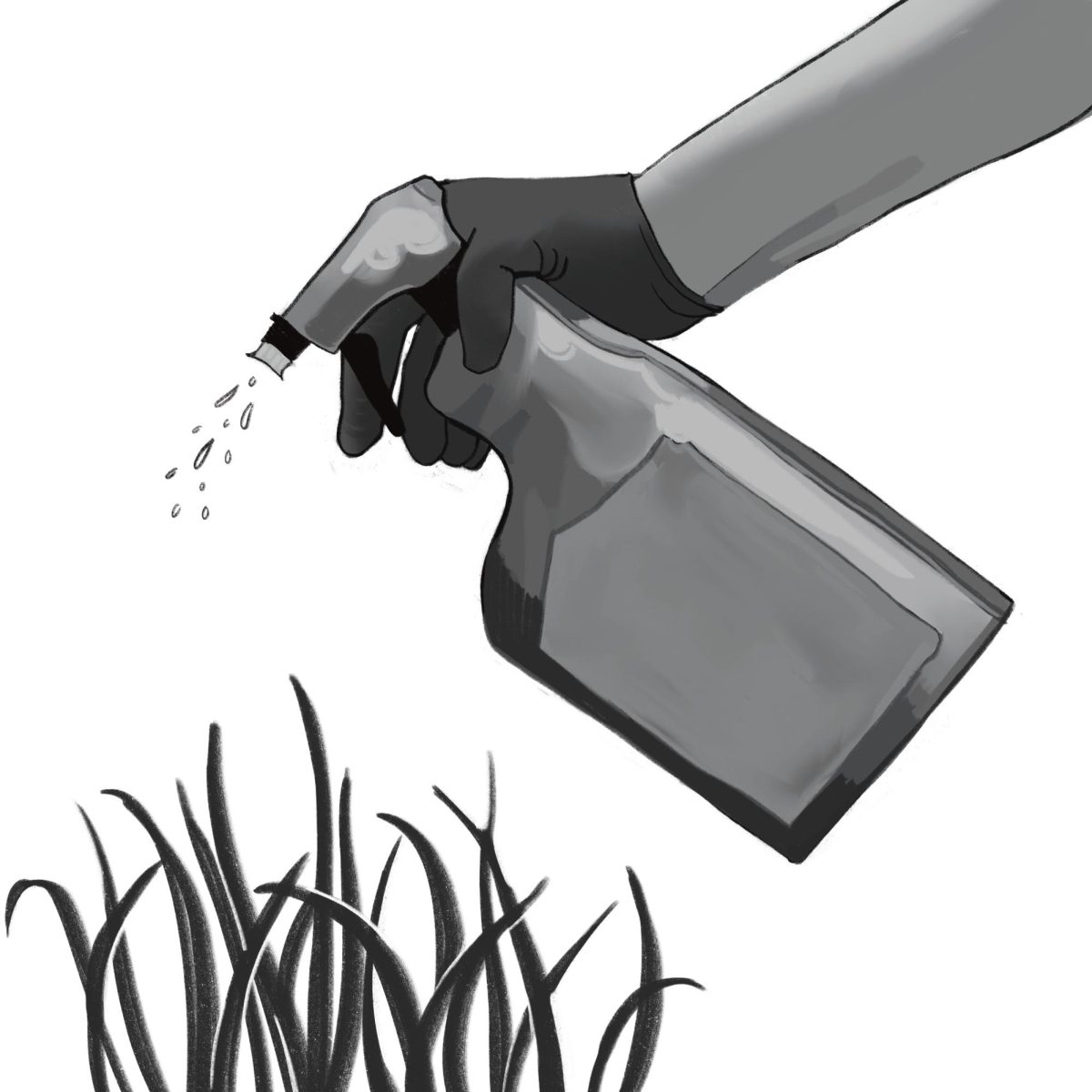
On April 8, the Supreme Court overruled a lower court order to reinstate the 1,000 National Park Service (NPS) workers that were terminated in February. These civil servants provide critical services to park visitors and maintain the relatively “pristine” nature that people from all over the world flock to every year.
The work of park staff is incredibly varied and covers matters big and small. They evaluate soil, air and water before and after fires to keep the public safe and help prepare us for future natural disasters. They clear park trails to prevent the public from tripping, and they stock the toilet paper so the public can use the bathroom before a long hike; they even find us when we get lost. They help our families plan how to enjoy the parks and instruct our kids on the cute animals to look out for and where to find them, and sometimes they let you know that it’s not okay to draw on that rock, step off that trail or climb that tree.
The effects of removing NPS workers will not only be felt immediately, but will also last for years, halting long-term projects and plans. And, unfortunately, firing park workers seems to only signify the beginning of a plan to shrink the entire Department of the Interior (DOI). NPS managers are being instructed to outline plans to cut 30% of their payroll. The budget cuts laid out by the new Department of Government Efficiency (DOGE) are projected to lead to a 50% cut in the interior workforce.
I spoke to the Assistant Director of the Outdoor Program at Whitman, Stuart Chapin, to get a better understanding of the significance of National Park workers.
“Speaking directly about what we need staffing for in national parks, it ranges from enforcement of rules and regulations, protection of resources – keeping people from unknowingly damaging the resources, to basic maintenance; keeping the roads working; keeping the bathrooms stocked and cleaning. There are large crowds of people that congregate at national parks. You need that infrastructure in order for people to have an experience that is not profoundly dangerous or negative,” said Chapin.
As Chapin brought up, safety of park visitors is a major concern now that the workforce is depleted.
Just in the last week, 33 hikers had to be rescued from various trails around Lake Mead in Arizona due to extreme heat. One of the rescue operations potentially saved a group of 25 disabled children and their three adult leaders. A hiker from another rescue group did not survive, and the National Park Service has now closed many of the trails. Incidents like these demonstrate the stress put on NPS resources and the necessity for adequate staffing.
Stuart Chapin underscored the important safety measures in national parks that are made possible by NPS.
“Lots of park staff are engaged in search and rescue, as needed medical assistance and rescue prevention. There is a wide range of things that national park staff do,” said Chapin.
He also provided some food for thought about other agencies within the interior that will be facing staffing cuts and its potential local impacts.
“DOGE is certainly cutting staff in other agencies besides the National Park Service. Our local forest, the Umatilla National Forest, is where we do quite a lot of our activities, and I’m sure that the [United States] Forest Service is also facing large staffing cuts. The U.S. Forest Service, Bureau of Land Management, National Park Service are all facing cuts. You have lots of different federal land management agencies that will be pausing on work like issuing permits for people to be able to visit places, opening campgrounds and doing trail maintenance because of pauses in hiring or layoffs that they’re facing,” said Chapin.
Ultimately, these parks may become very inaccessible to the public. In addition to a hiring freeze and a pause on seasonal hiring, NPS has shed hundreds of employees in the last two months due to early retirement offers and resignation incentives, as well as the firing of probationary employees. This significant reduction in workforce notwithstanding, Interior Secretary Doug Burgum directed NPS staff to keep parks open at their normally posted hours. He further directed any change in normal park hours to be reviewed by the NPS Director — a Trump appointee — and other high ranking officials. The secretary’s directive was criticized by the National Parks Conservation Association, which complained that the directive would lead to “parks being ‘micromanaged by political appointees,’” according to a news report by the National Parks Traveler.
One Department of the Interior official, who spoke to The Wire on the condition of anonymity because they are not authorized to speak publicly, discussed the limits of National Park bandwidths due to these staffing changes.
“Interior employees are going to do their best to keep public lands open at their normally stated hours, but, because of serious staff shortages, many employees are already doing the jobs of two or three people, limiting what these employees can do safely and practically, and will not sugar coat that fact when reporting to leadership about their ability to maintain normal public access to public lands,” said the official.
Alissa Cordner, Associate Professor of Sociology and a Paul Garret fellow at Whitman, emphasized the importance of the essential work that federal workers do.
“Federal workers are tremendously valuable employees to their agencies. They often have unique combinations of skills, subject matter expertise and institutional knowledge that allow them to do their jobs well. Certainly inefficiencies exist in any bureaucracy, especially one as large as the U.S. federal government, but from my research on federal employees in several agencies, as well as personal connections with federal employees, they are overwhelmingly committed to their jobs and to doing high quality, careful work for the American public,” said Cordner in an email the The Wire.
Another federal employee who spoke with The Wire at the “Hands Off!” march in Walla Walla emphasized the precarity of their work under the Trump administration.
“I am a federal employee, so we’re taking it pretty hard. Everyday people are disappearing from our office.”
A steady stream of news reports have detailed challenges by federal employees, unions and watchdogs asserting that these terminations are unlawful and violate many aspects of the U.S. Constitution. Citizens for Responsibility and Ethics in Washington tracks Trump’s unprecedented and often illegal firings of political appointees and watchdogs.
Federal Judge William Alsup demanded the reinstatement of 1,000 federal workers who were fired without notice. Alsup said that the mass governmental layoffs are illegal, because the agency ordering many of these staff terminations — the Office of Personnel Management — has no jurisdiction over firing workers in other federal departments. The Office of Personnel Management (OPM), claims it did not directly instruct firings but instead told departments to review “probationary workers” for continued employment. Federal workers in their first year of employment are often “probationary employees.” There are currently around 200,000 probationary federal workers. On April 8, Alsup’s order was put on hold by the U.S. Supreme Court due to the Trump administration’s claim that the nonprofit organizations involved in issuing the order have no standing in the case and cannot sue for the terminations.
Cordner shared her thoughts about the necessity for job security and stability in governmental work.
“There is a lot of uncertainty about which of the Trump administration’s actions and orders are actually legal, creating stress on the work that the agencies are doing and actually introducing more inefficiencies into these systems. If the goal was to actually make the agencies more efficient and improve their performance, listening to career employees’ suggestions – rather than critiquing their work or firing them – would be the best path forward,” said Cordner.
Cordner’s statement, along with the nature of these orders, blocks and appeals illustrate the unpredictability that millions of federal employees currently face. Finding federal government employees willing to be interviewed for this article was extremely difficult and in the end, nearly impossible, as people are afraid of potential retaliation under the shadow of an unstable presidential administration.
To what end is this damage and destruction? After Watergate, ethics infrastructure was written into law through the Ethics in Government Act and Inspector General Act, which requires independent ethics oversight of the Executive Branch. The Trump Administration has dismantled this act with the firing of the heads of Office of Government Ethics, Office of Special Counsel and the 17 Inspector Generals — people whose job it is to find fraud, waste and abuse and produce detailed and verifiable publicly available reports of their findings.
In their place, making and encouraging these reductions at the NPS and other agencies, is a government contractor – Elon Musk. Musk’s DOGE has been very secretive, spewing data often proven wrong, and having close to no verifiable or detailed reports released, unlike the Office of Government Ethics.
Stuart Chapin left with some final thoughts emphasizing the lasting impact these federal cuts will have on National Parks and visitor experience.
“We will continue to feel the effects of budget cuts and layoffs in those departments for years to come, even after the Trump Administration is finished and another administration has taken over. We will be feeling the effects via closed buildings, closed roads and changes in park policy.”
The Trump administration’s actions against the NPS and dozens of other federal agencies have created an evolving situation that changes almost every week. We will see its implications and consequences even more clearly in the years to come.







